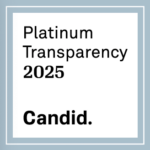Tumor mutational burden (TMB) has generated interest as a potential biomarker of response to immunotherapy and has already been examined in the context of several lung cancer trials to gauge its utility.
One such analysis, which was presented at the 2019 European Society of Medical Oncology (ESMO) Congress, explored the association between tissue TMB and efficacy of immunotherapy from patient samples taken from 2 completed trials of pembrolizumab (Keytruda) monotherapy in patients with non–small cell lung cancer (NSCLC).
Tissue samples were taken from the KEYNOTE-010 and KEYNOTE-042 trials, which explored the use of pembrolizumab versus chemotherapy for patients in the second-line setting and beyond and the first-line setting, respectively. Twenty-four percent of patients were evaluable for tissue TMB from the KEYNOTE-010 trial and 62% from the KEYNOTE-042 trial. These samples were then tested for TMB as assessed by whole-exome sequencing of the tumor and matched normal DNA, and then checked for association with outcomes.
The study found that tissue TMB was associated with overall survival (OS), progression-free survival (PFS), and objective response rate (ORR) for pembrolizumab, but TMB was not associated with outcomes with the use of chemotherapy. Across the 2 trials, patients with high tissue TMB scores (≥175 mutations/Megabase) generally demonstrated improved OS, PFS, and ORR rates. These results were seen in patients with PD-L1–high NSCLC who were treated with pembrolizumab.
In an interview with Targeted OncologyTM, investigator Roy S. Herbst, MD, PhD, Ensign Professor of Medicine (Medical Oncology) and professor of pharmacology, chief of medical oncology, and associate cancer center director for translational research, Yale Cancer Center, explained the results of the retrospective analysis of tissue TMB and its association with response in the 2 pembrolizumab trials, and what this could mean for future use of TMB as a biomarker in NSCLC immunotherapy trials.
Targeted OncologyTM: How did you look at tissue TMB in the context of the KEYNOTE-010 and -042 trials?
Herbst: We’re constantly trying to improve the effect of immunotherapy in patients with lung cancer and TMB for a number of years now has been thought of as a potential predictive marker. The results have been somewhat mixed. We’ve looked at this in retrospective cohorts and while there has been association with PFS, up until now there hasn’t been a demonstration of OS correlating with tissue TMB. We thought that we’d take advantage of the fact that we had 2 trials of single-agent pembrolizumab versus chemotherapy, one KEYNOTE-010 in a second or more line setting, the other KEYNOTE-042 in a first-line setting. We looked at those samples and did whole-exome tissue TMB [testing], meaning that we looked at the whole-exome sequencing [on tissue samples] from these randomized studies against control, and that’s what I presented at the ESMO meeting.
What results were seen from this analysis?
It was very enlightening. Keep in mind these are exploratory analyses and we only looked at a subset of patients in each trial because in some cases there wasn’t enough tissue to do the analysis or we didn’t have consent from the patients. We had more consenting patients from the first-line trial—KEYNOTE-042 than KEYNOTE-010, which makes sense. In both cases, the analysis showed that looking at TMB as a continuous variable, was highly correlated with outcome, both in the second or more line setting in KEYNOTE-010 or in the frontline setting with KEYNOTE-042. That was quite exciting.
If you look at how it correlates with chemotherapy, because that’s the beauty of having a randomized trial, you can look at both [arms], there was no correlation in the KEYNOTE-010 trial, [but] in the KEYNOTE-042 trial there were some mixed results. There was no correlation between TMB and OS or PFS. There appears to be something going on with tumor response rate, which needs a little bit more analysis, but it looks like we can use TMB perhaps in future trials as a predictive marker. It still needs to be validated in prospective trials [though].
Then we did something very interesting. Based on prior data from the KEYNOTE studies, we picked 175 mutations per Megabase as a cutoff point, and that comes from a whole bunch of historical data. That correlates to 10 mutations per Megabase from the Foundation Medicine assay. When we used that as a cutoff, we found that in the KEYNOTE-010 trial, both for OS, PFS, and response rate, that selected a group of patients much more likely to benefit from pembrolizumab than those with lower TMB. The group that had lower TMB still seemed to benefit, but not quite as much. The same was seen in KEYNOTE-042 [data]. So it suggests that something is going on here that could someday be a predictive marker.
We spent 20 years now trying to figure out how targeted therapy predicts and works, and we’re still figuring that out. And now, for immunotherapy, we’re in the infancy of this field, but we have to personalize it, and as we do that, we’re going to have PD-L1 as a biomarker for sure, but now it looks like TMB, perhaps [where] the method of whole exome is a bit more precise, might be used as well. I was very excited to present these results.
If TMB is interwoven into clinical trials, how could it be used in the context of PD-L1?
One thing that we showed was that TMB and PD-L1 had no association at all. It’s possible that TMB might help us find a population of patients who [have] PD-L1–low [expression] who still benefit. It’s also possible that dual PD-L1– and TMB-high patients might do even better. So what we need to do now is to look at the different quadrants in a 2:2 analysis: PD-L1 high and low, TMB high and low. And that will be looked at in retrospective cohorts as well as in prospective studies.
Is TMB currently a marker that’s tested for on available assays?
TMB is not tested for in the way that we did on our trial–whole-exome. That requires sending a sample out and it takes a number of weeks, more than most people would wait. Certain panels of limited numbers of genes [look at] TMB, such as Foundation Medicine, and others are done routinely as part of those assays. At Yale we’re not routinely testing TMB with the assay we have in house.
Right now this is something for research purposes, but [could] be part of a panel as we try to figure out which biomarkers to use and in which cases.
Is there a potential to use liquid biopsies for TMB testing?
Blood versus tissue TMB, it’s hard to know how that correlates. In blood you have to make sure that the tumor cells are shed, you have to have enough of a sample. I’m not sure that you can link this now to the blood. I think we can probably start to link this to the tissue; there are efforts now around the world—there’s the Friends of Cancer Research and others—that are trying to harmonize this field. But the blood will take more time.
https://www.targetedonc.com/news/herbst-explains-the-potential-for-tmb-…

